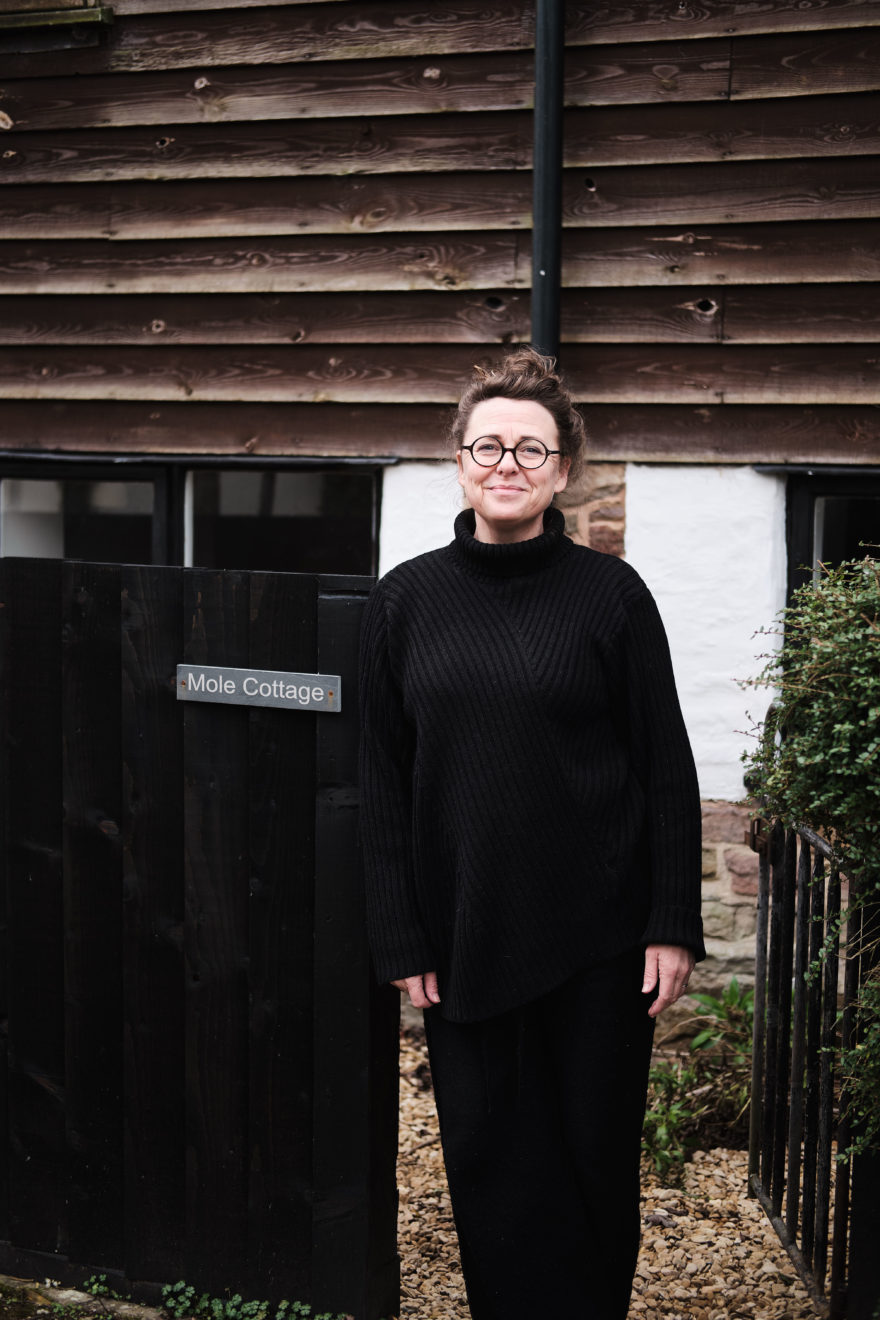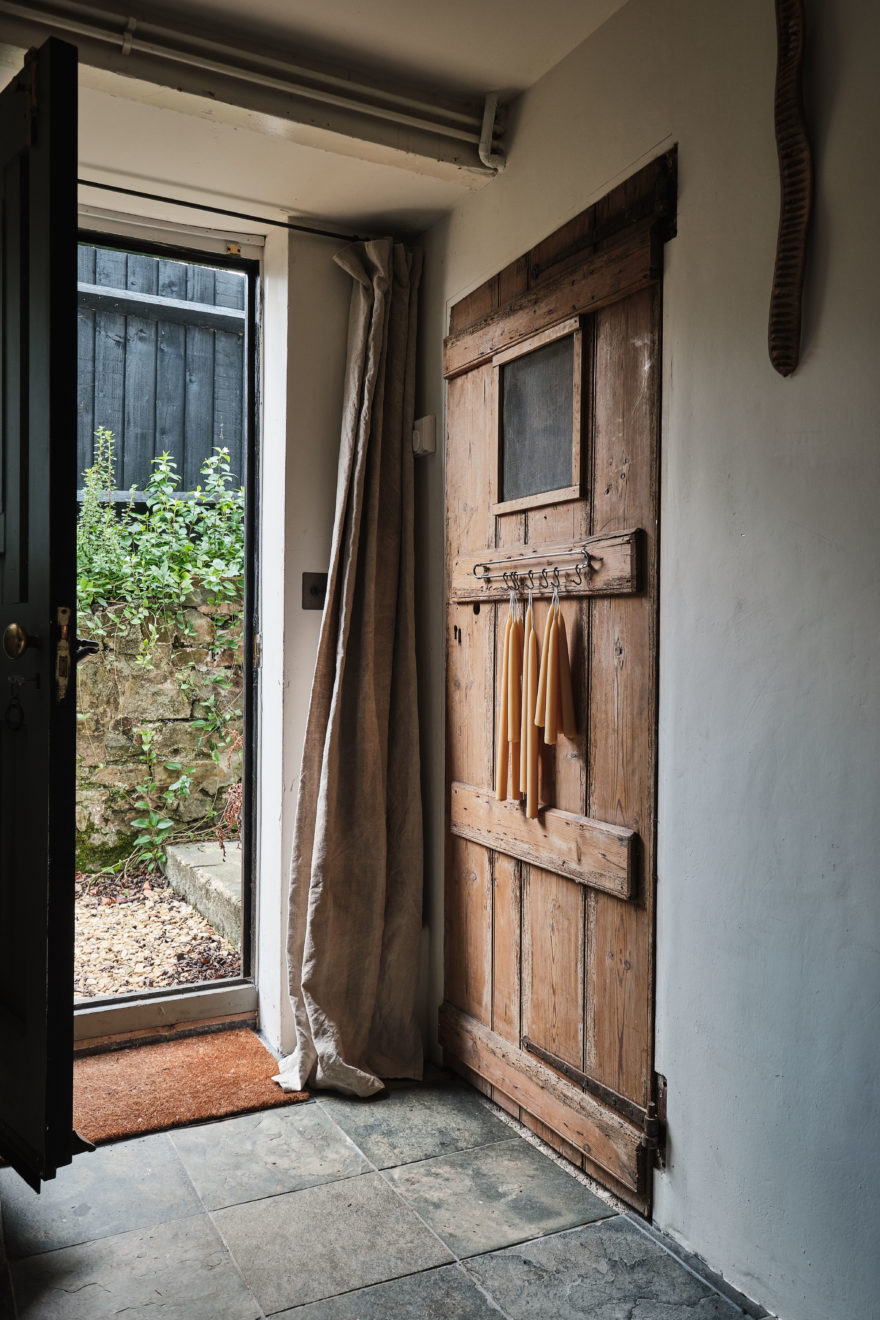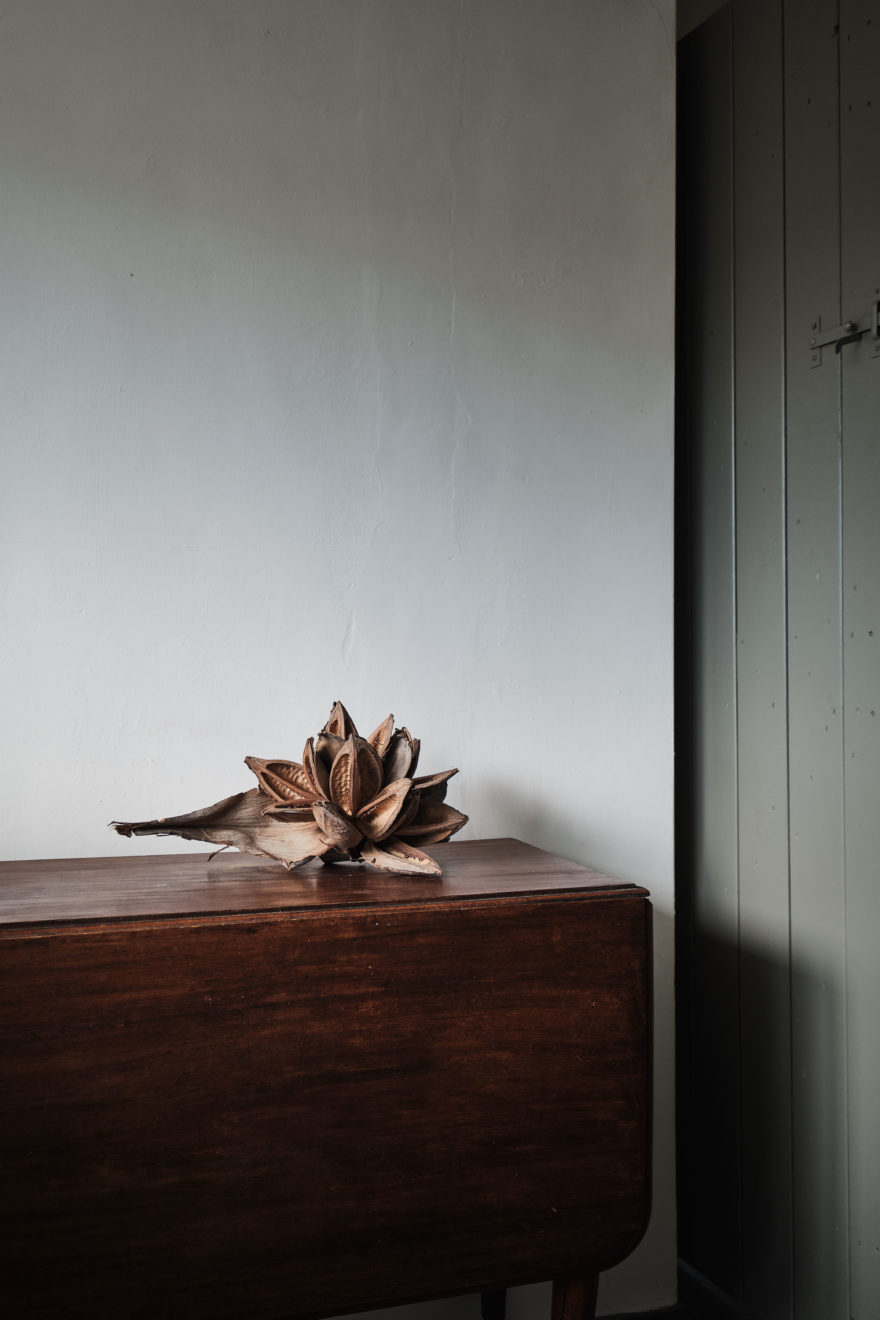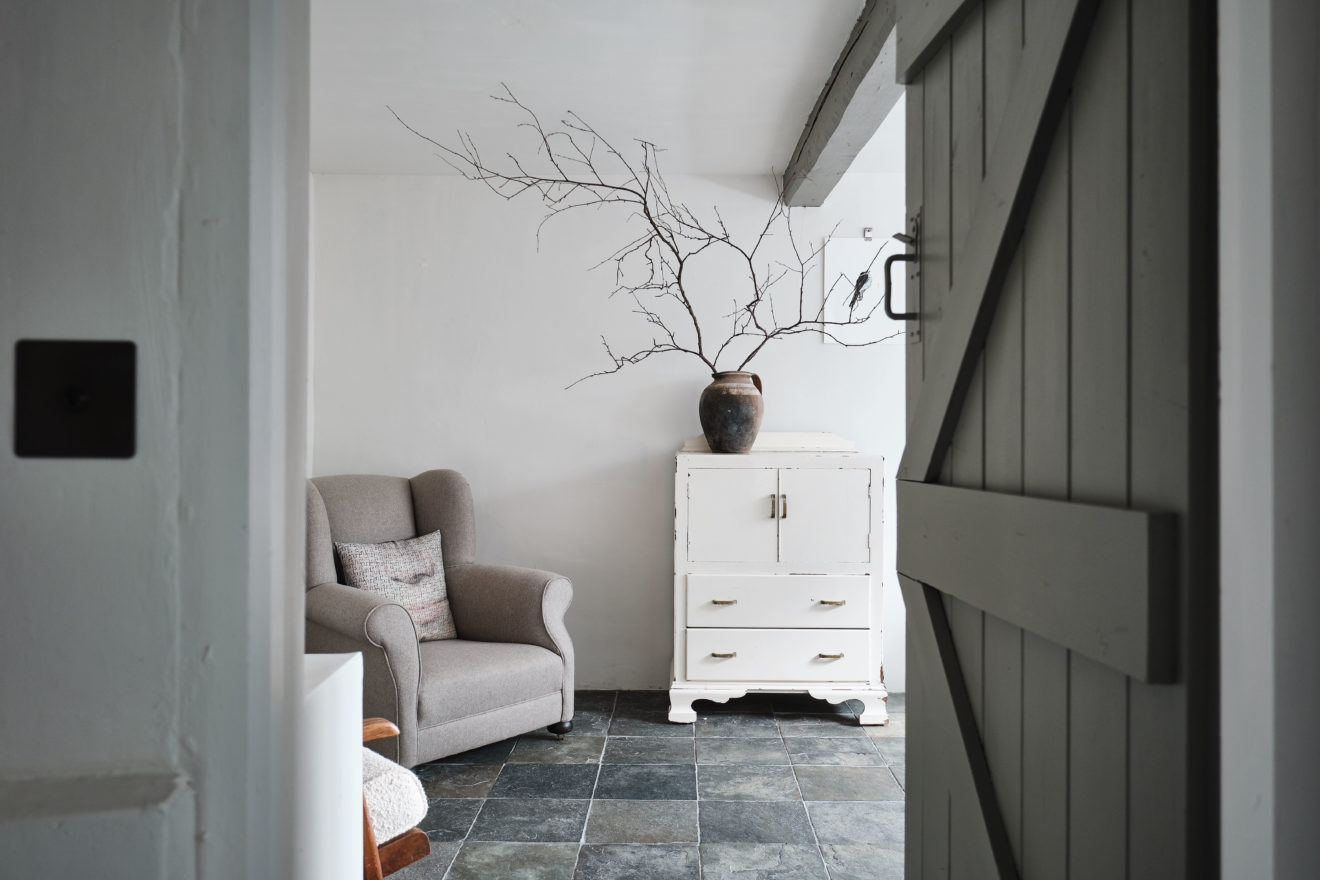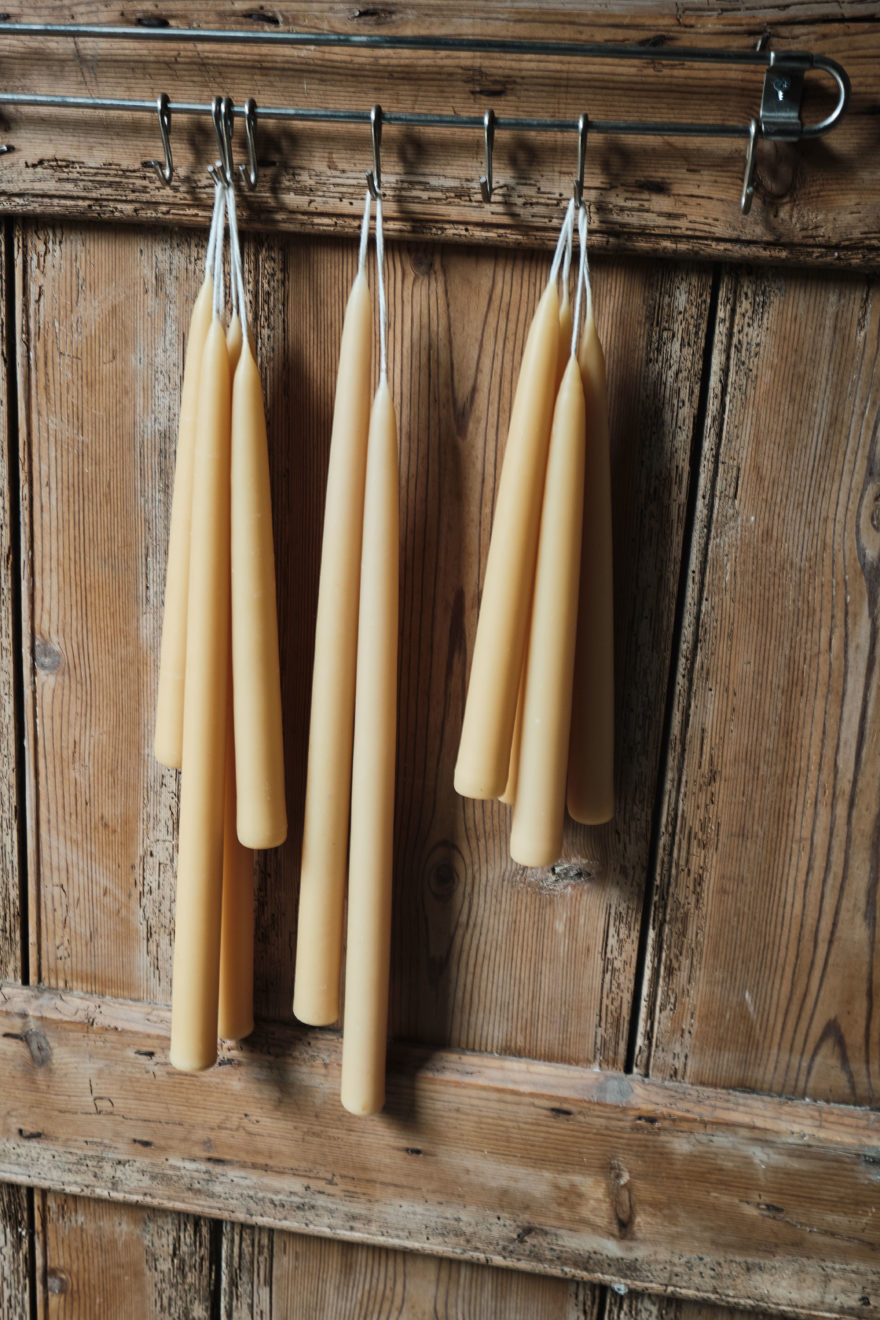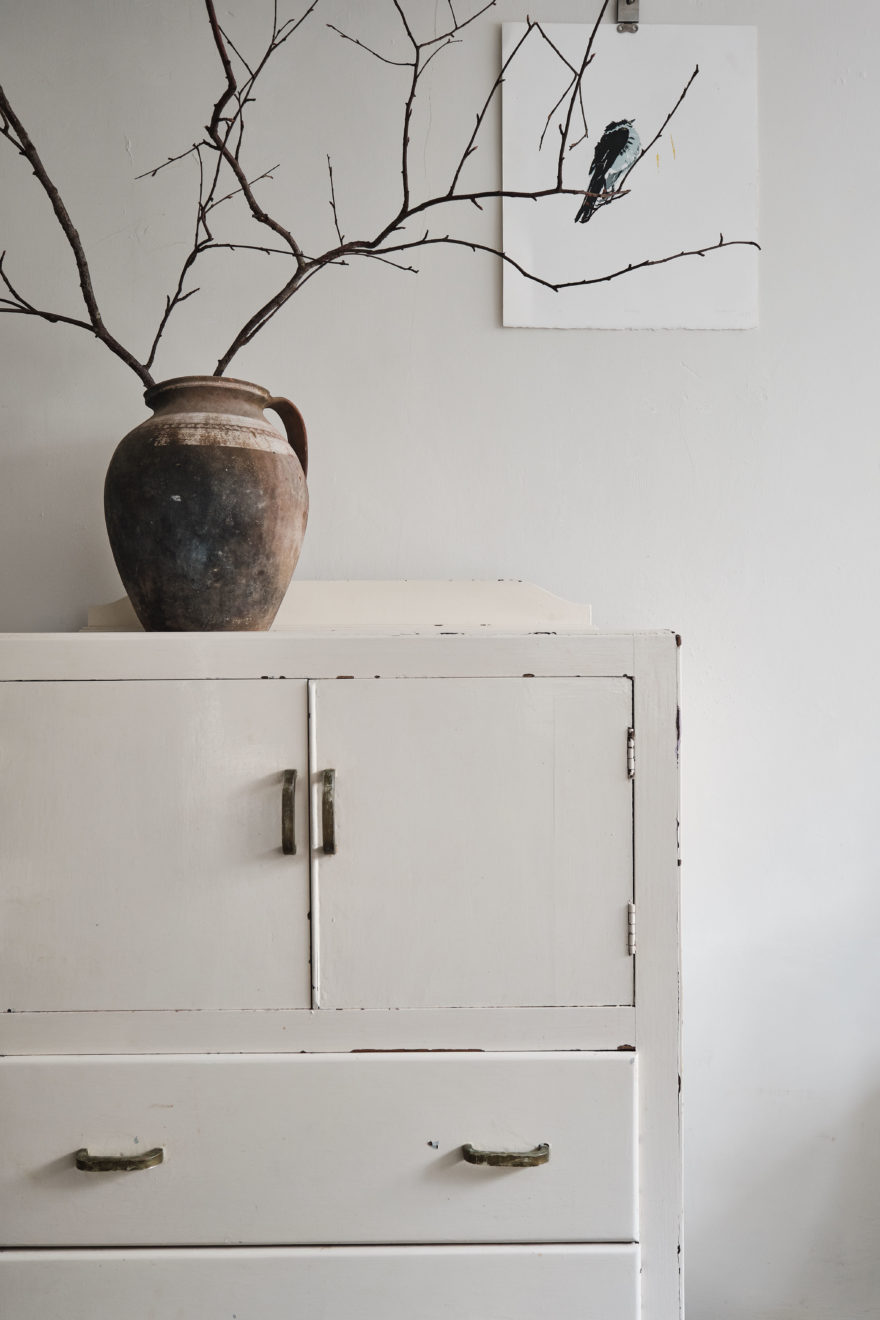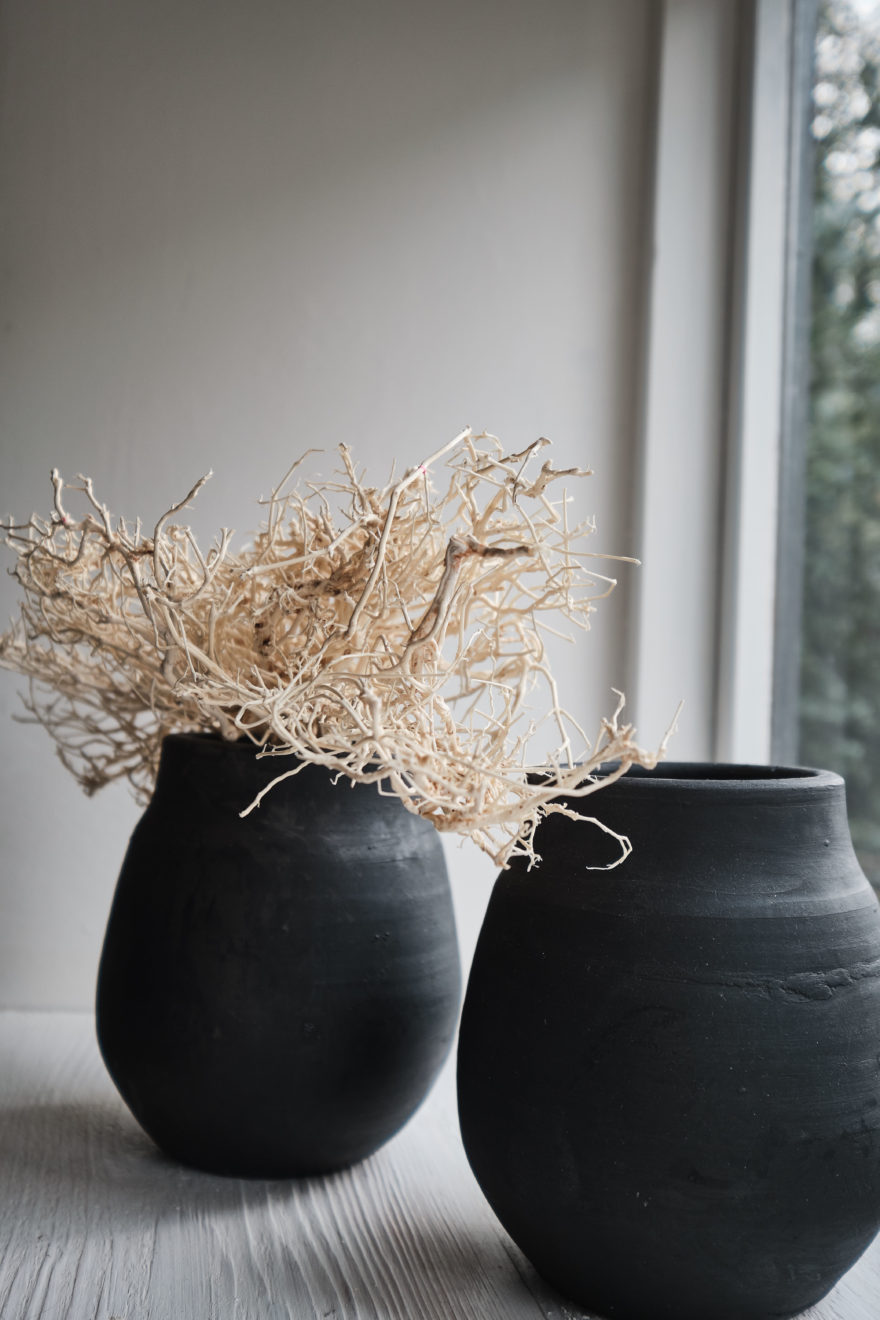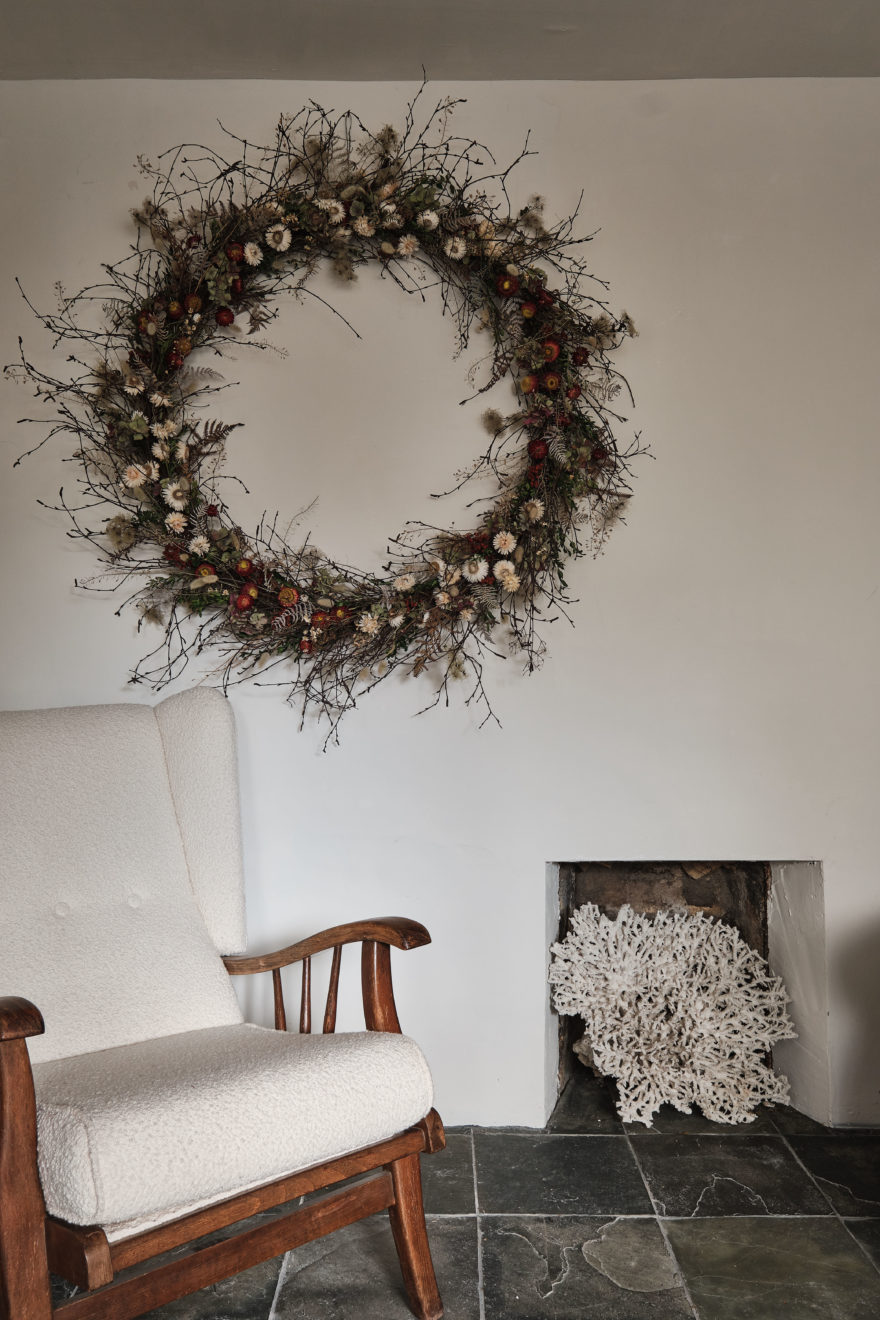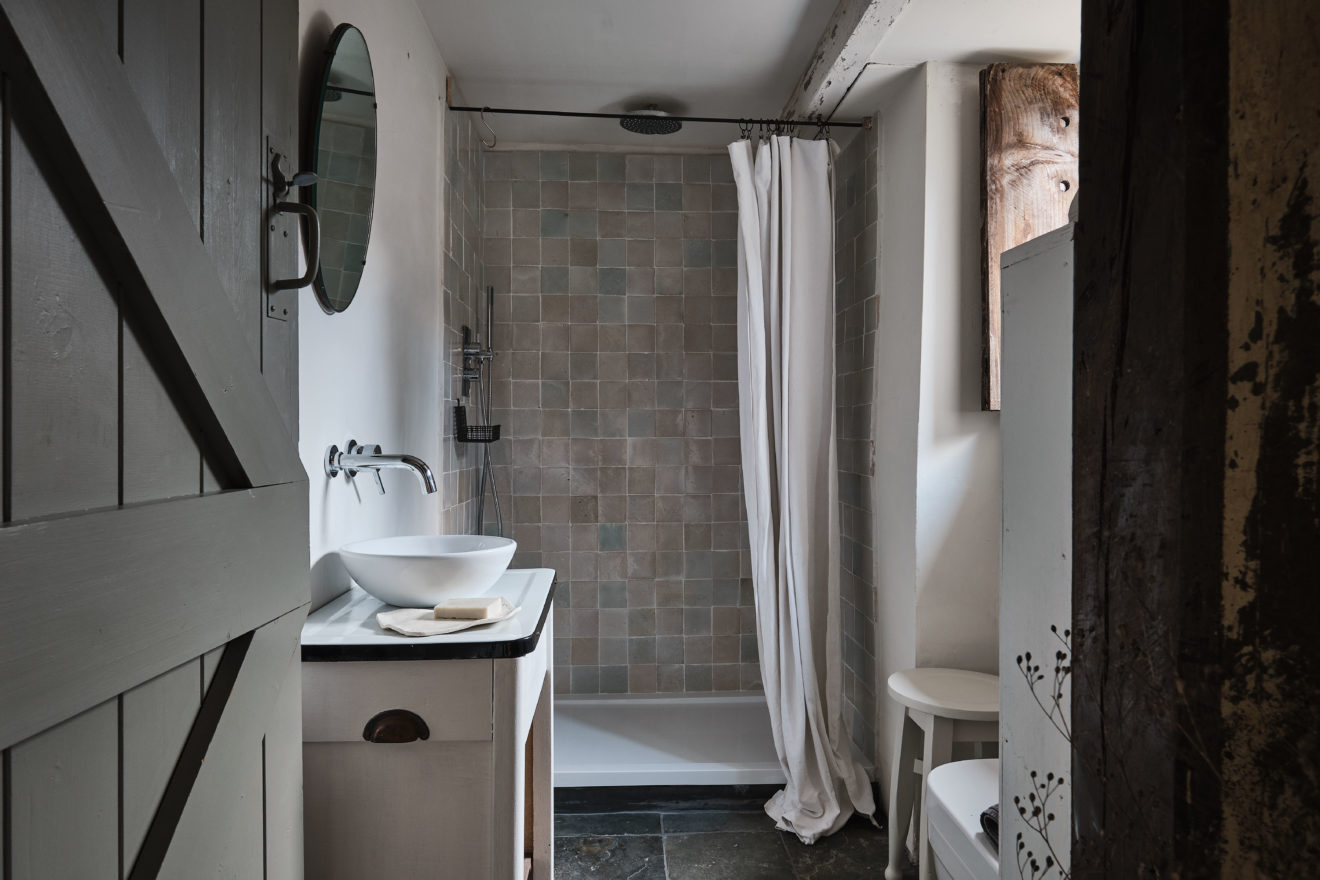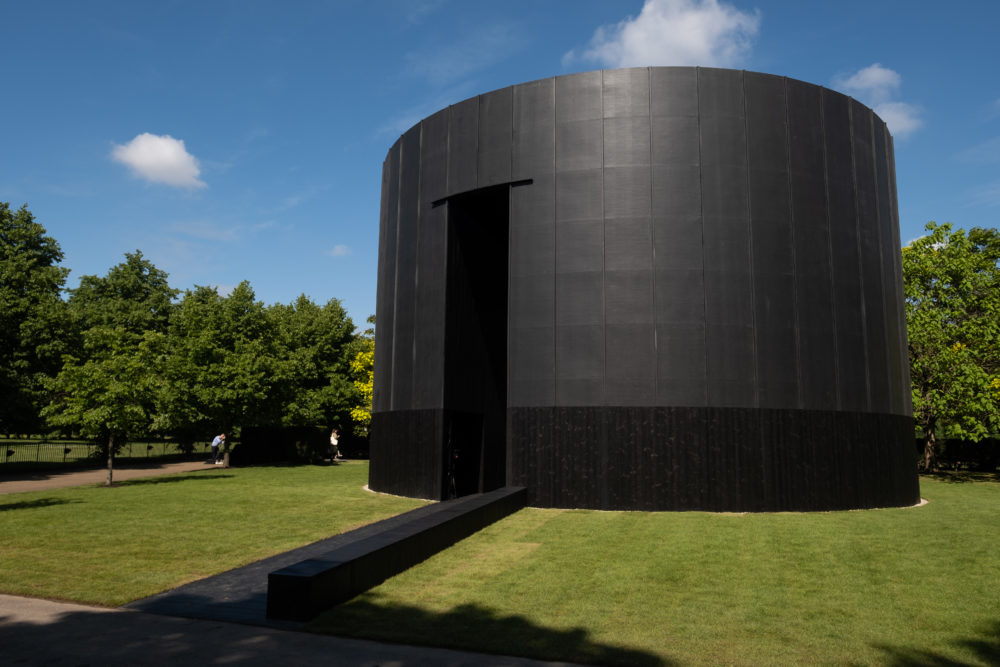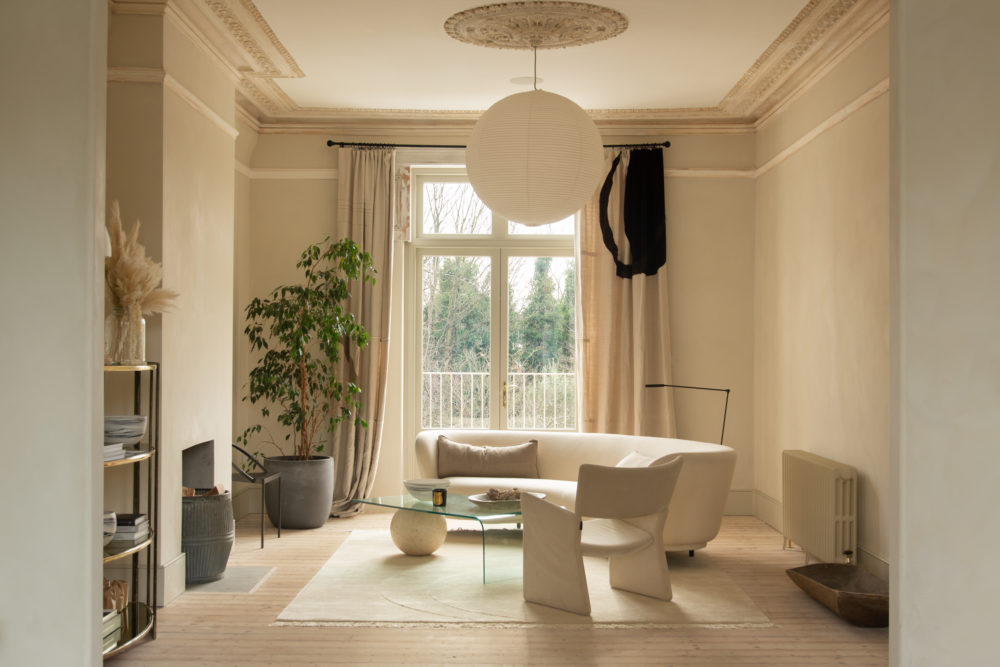Mole Cottage by Harp Studio
Created within the bounds of an originally medieval building, this dinky Welsh holiday home in Presteigne, Powys, takes childhood favourite Wind in the Willows as inspiration for its design – harking to the home of one of the story’s most prominent characters. Mole Cottage transforms this sweet, subterranean space into a calming studio apartment that confutes its almost-all-underground situation. We chat to the person behind the project, Justine Cook, who undertook the renovations as part of her creative studio, Harp Studio.
We were looking for somewhere to explore the flexibility a property could offer, and also create an urban space in a rural setting. Presteigne was the ideal choice, with its selection of places to eat out and wonderful shops – especially lots of antique shops. We started looking for a showroom for the studio and our furniture range, and Mole Cottage was perfect! The cottage is partly medieval and could date back to the 1200s, but very few original features survive. The tiny rooms we inherited were dark and cramped, and I relished the challenge of converting them into a fully functioning space with an atmosphere of space and light. Then, lockdown hit, and we couldn’t complete work until the end of 2020. During that time we realised that we could also let Mole Cottage as a holiday let – a city break in the countryside. So we run the cottage as a showroom in the week and as a holiday let at the weekends.
Mole Cottage is a half submerged burrow of a place. A compact and bijou residence not far from the river, hence the reference to Mole from Wind in the Willows. It is a place to retreat to and relax. Somewhere to snuggle up with a book. It is tucked away on a no-through-road that makes you feel hidden away.
We started renovations in early 2020 but we were flooded out, fortunately for us, as we could then make major changes to mitigate it happening in the future. We raised the floors and put in wet underfloor heating. We also used breathable lime plaster to help with any potential future issues. Plumbing was also an issue due to being below ground but with the help of an excellent ground-worker, who we have used for years, we solved the issues. Think Heath Robinson meeting state-of-the-art technology!
For me, it’s always about texture and light; the building up of all the different elements that make up a home. How light moves around the room is hugely important to me and being mindful of this and using it to create an atmosphere. I think it’s fair to say that our homes are always more relaxing and calm in real life than a photograph can convey. A calming pale background is the basis of all my designs and fundamental to how I work. For me, any room is only the backdrop for the life that will be lived in it. So rooting the room in a calm space allows the detail and minutiae of life to work more freely, without jarring.
Totally relaxed and rested.
The way the light moves through the cottage. The windows are all on one side facing west, so the evening light drawing shadows across the walls is so beautiful. We have few details on the walls, so the interplay of sunlight and shadows on the walls can be seen.
So much inspires me. It’s about environments and how they make you feel. My art work was very much about responding to a space and bringing a narrative to light. I was always searching for the overlooked or ignored elements; forgotten history, the sound of crows, the way a beam of sunlight hits the floor. These elements are the same in my interiors work but they’re grounded in practicality, not pushing boundaries of people’s perceptions.
A safe space, that perfectly reflects the people that live there.
I approach every project the same way, which is to respond to the space. A lot of the ‘tools’ I use are very similar, as I am always striving for a gentle, calm environment. However, each space needs to be what it needs to be. I look to reuse and repurpose as much as I can, so each project will always be unique but as it’s my vision the themes will be the same. With our own home, it’s our family home and so it reflects us as a family.
Absolutely. A holiday home is like a stage set before guests move in and live there. So, the space has to work for different people not just one family. It also doesn’t need as much storage as a normal family home. A holiday let needs to feel warm and inviting but also be neutral enough that guests can project themselves into the space easily. A good holiday home should also inspire and give the guests the opportunity for a different way of living, whilst also being a home away from home.
Be very practical; if you are renting the space out, you have to design very differently than if you are just creating your own home.
I always look at the form of objects first. If a table has an interesting shape, for example, even if needs restoring, the bones are there. I also like them to have the right feel. Sometimes it’s the texture or how it feels in your hands; I dislike objects that are designed to look good but impractical to use. A lot of design classics are uncomfortable and impractical.
I wanted something that offered a new response. It’s a warming, welcoming smell that makes you feel grounded. All the essential oils are chosen for the qualities they have. So the scent will have an effect on how you feel. For example, Palo Santo is known as a holy wood and for its ability to purify of the air and the mind.
‘Hiraeth’ is a Welsh word with no complete translation but roughly means a longing for home; a yearning. This is what I wanted to make people feel, a smell that would centre them as being home, almost a nostalgia fulfilled.
I am currently pivoting the business as we speak, so that I can concentrate more on creating new designs for the studio, and also a way for the studio being more approachable and accessible. So I am moving away from client work so that I can nurture the studio’s growth. We have so many amazing projects in the pipeline, such as a fabric range that’s been in development for nearly three years, so it will be wonderful to finally be able to share it!

